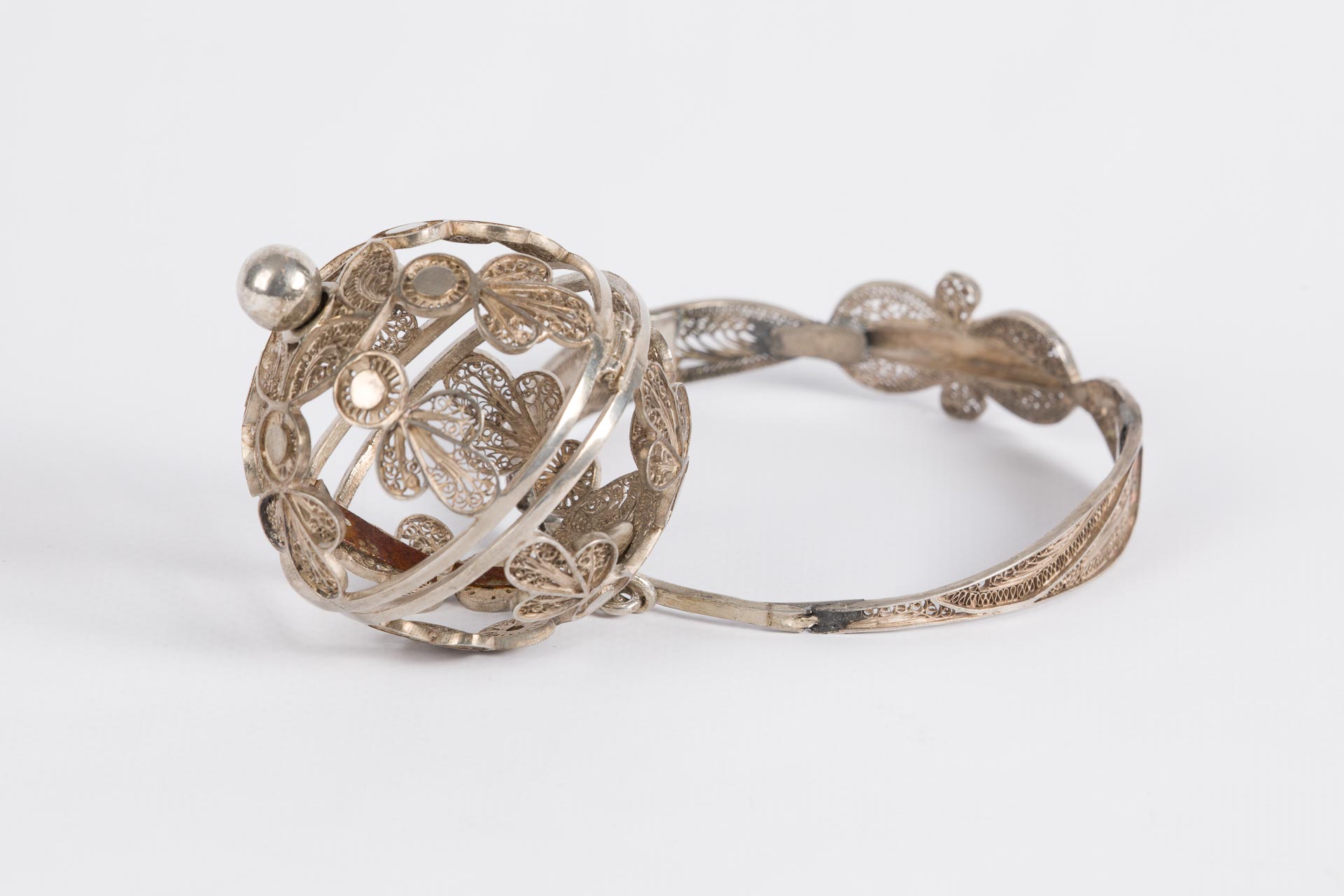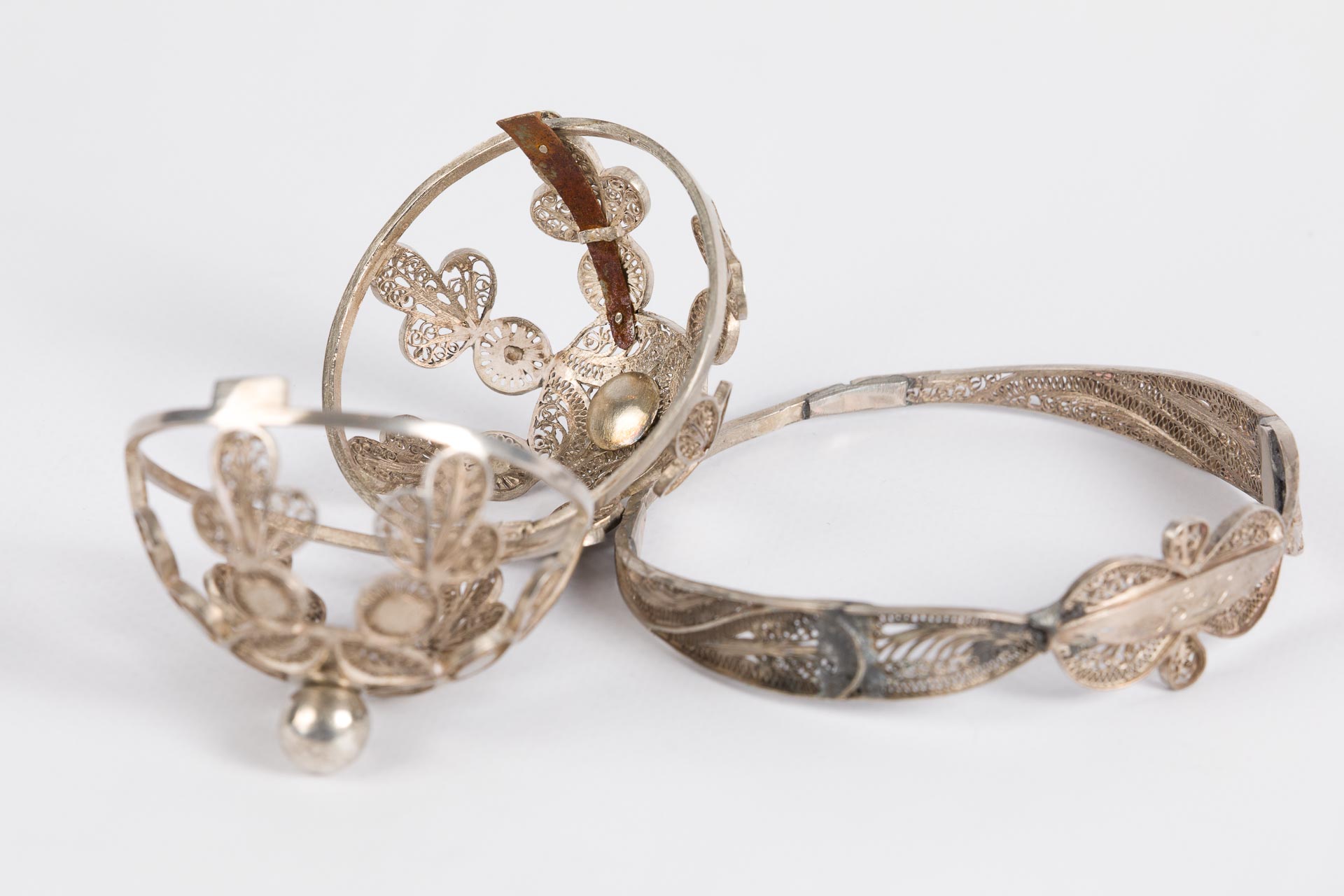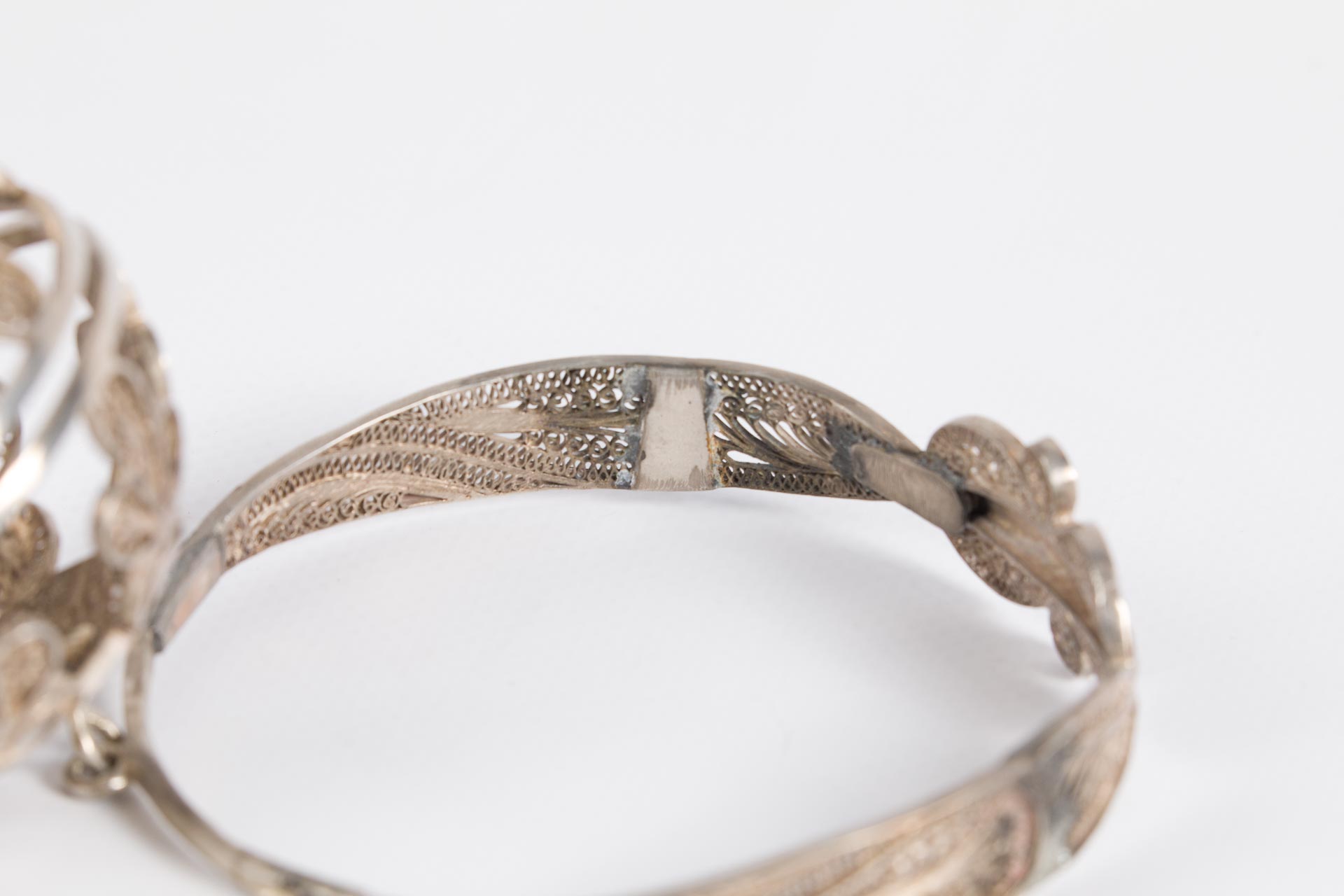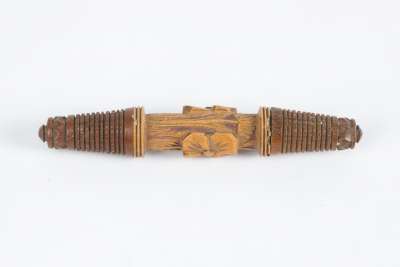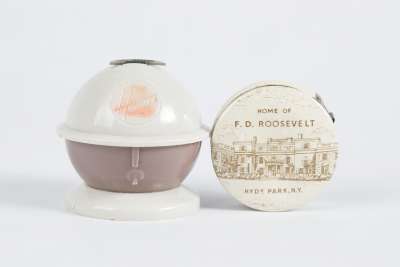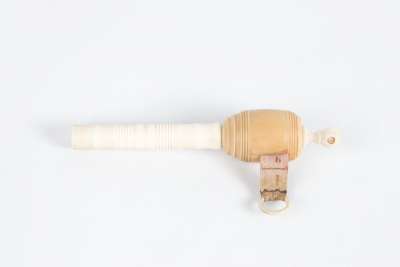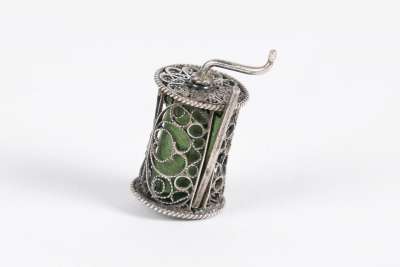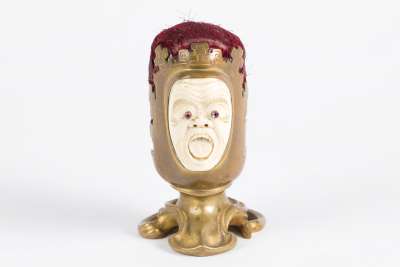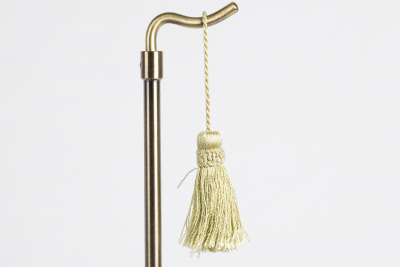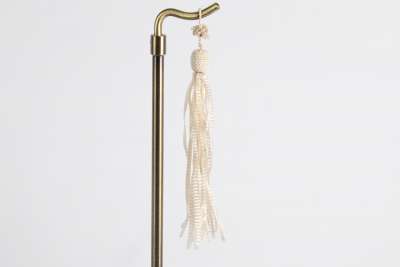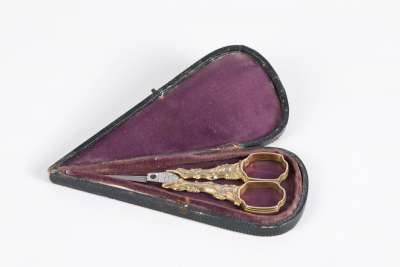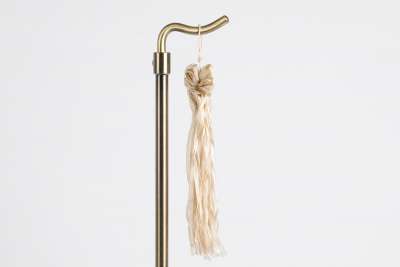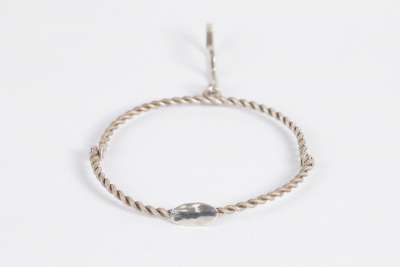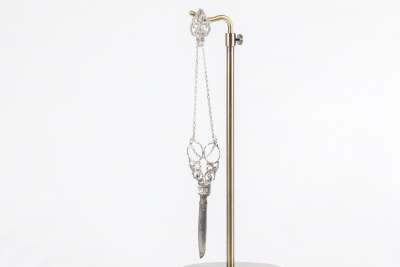The Filigree Yarn Holder, dating back to circa 1860, is an intricate piece likely crafted in a European country known for its filigree work. It features a spherical design with delicate floral filigree panels that encompass the ball. Attached to this ornate ball is a filigree bracelet, also adorned with floral motifs, allowing the ball to rotate freely. The ball's centre can be separated, making it functional for inserting and holding a yarn ball securely during use.
Condition Report
Overall, the Filigree Yarn Holder exhibits wear that is consistent with its age and historical use, as expected of a piece from the 19th century. The filigree work remains largely intact, showcasing the craftsmanship of the era. The bracelet, which forms part of the piece, has been previously enlarged, a modification that may have been done to accommodate various wrist sizes. This alteration does not detract from its functionality or aesthetic appeal. Additionally, there are minor surface blemishes that come with age, but these do not significantly affect the decorative aspect of the yarn holder.
Dimensions
Weight: 72gm, Length: 16.5cm, Width: 8.5cm, Height: 2cm.
A Tool for the Creative
This antique yarn holder was originally intended for use by knitters and crocheters, providing a practical solution for managing yarn while working on a project. The ball's ability to rotate freely on the bracelet allows for smooth dispensing of yarn, preventing tangles and ensuring an even feed as the user works. Its portable design would have been particularly useful for women of the era who engaged in knitting as a social activity, allowing them to take their projects with them while maintaining the elegance expected of their status.
Victorian Filigree Craftsmanship
The Filigree Yarn Holder is a fine example of Victorian-era filigree craftsmanship. During this period, intricate metalwork was highly prized, with artisans creating elaborate designs that showcased their skill. Filigree, a delicate form of metalwork involving twisted threads of metal, was especially popular in jewellery and decorative objects. This piece exemplifies the detailed and ornate style characteristic of the time, with its floral patterns reflecting the Victorian fascination with nature and botanical motifs. The craftsmanship involved in creating such a piece would have required significant skill and precision, making it a valuable addition to any collection of Victorian antiques.
The Craft of Filigree and Metalwork
The construction of this yarn holder would have begun with the selection of fine metal threads, likely silver or a similar alloy, which were meticulously twisted and soldered to create the intricate floral patterns seen on the filigree panels. The bracelet, similarly crafted, would have been attached to the ball in a manner allowing rotational movement, a design feature that highlights the innovative engineering of the period. The process of crafting such a piece required a high level of expertise in both metalwork and design, with each component being hand-finished to achieve the delicate appearance characteristic of fine filigree work.
Crafted by Skilled Artisans
While the specific maker of this yarn holder is not identified, it is likely the work of skilled European artisans who specialised in filigree and metalwork during the mid-19th century. Such craftsmen often operated within family-run workshops or small guilds, passing down their techniques through generations. The quality and intricacy of the piece suggest it was crafted by an experienced artisan familiar with the demands of producing such delicate work. This yarn holder, with its blend of functionality and beauty, reflects the high standards of craftsmanship expected during the Victorian era.
Collected by Enthusiasts of Victorian Craft
This type of antique appeals to collectors who appreciate the intricate beauty and historical significance of Victorian-era craftsmanship. The combination of utility and decorative appeal makes such pieces highly desirable for those who value both artistic and practical aspects of antiques. Collectors often seek out items like this yarn holder not only for their aesthetic charm but also for their representation of the technological and artistic advancements of the time. The piece serves as a tangible connection to the past, offering insight into the daily lives and creative practices of individuals in the 19th century.

